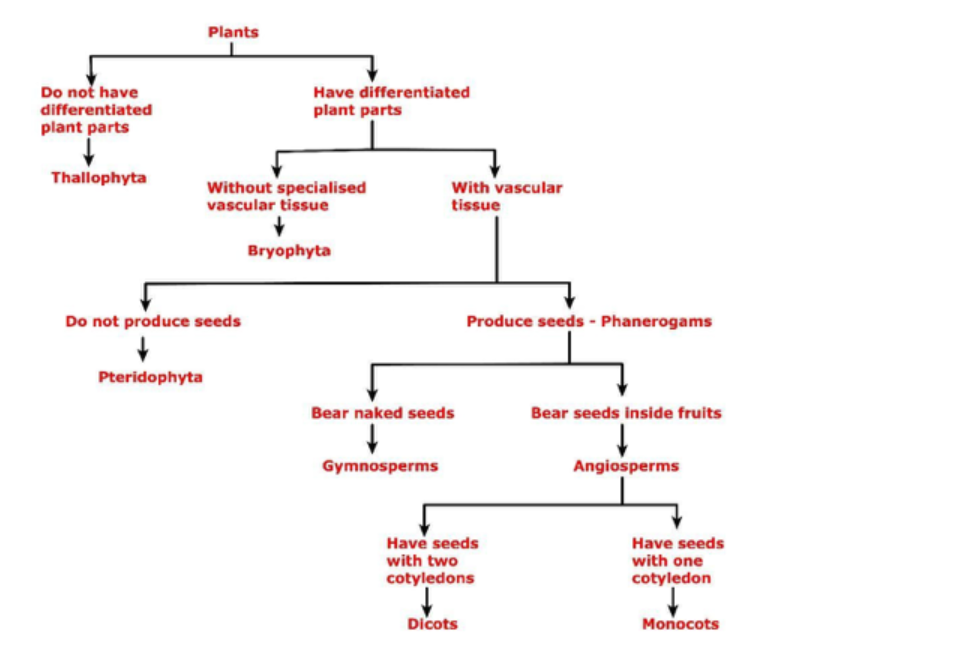Greek scholar Aristotle ordered creatures as indicated by the environment, to be specific land, water, or air. It is an extremely basic yet deceptive perspective on. Accordingly, it is needed to choose qualities which are to be the reason for making the broadest divisions. Further, there is a need to pick the following arrangement of attributes for making sub-bunches inside these divisions.
Characterization and Evolution:
Qualities that appeared before are probably going to be more essential than attributes that have appeared later. This implies that the grouping of living things will be firmly identified with their development.
The greater part of the current living things have emerged by a gathering of changes in body plan that permit the life form having them to endure better. Charles Darwin previously depicted this thought of advancement in 1859 in his book The Origin of Species.
The Hierarchy of Classification-Groups:
Scientists, like Ernst Haeckel (1894), Robert Whittaker (1969) and Carl Woese (1977) have attempted to characterize all living organic entities into general classifications, called realms.
Whittaker proposed the five realms arrangement: Monera, Protista, Fungi, Plantae and Animalia and it is generally utilized.

Fig. The Five Kingdom arrangement
These gatherings are framed dependent on their phone construction, mode and wellspring of sustenance and body association.
The adjustment Woese brought by separating the Monera into Archaebacteria (or Archaea) and Eubacteria (or Bacteria) is likewise being used.
Further characterization is finished by naming the sub-bunches at different levels as given in the accompanying plan:
By isolating organic entities dependent on the pecking order of qualities into more modest and more modest gatherings, the essential unit of characterization characterized is a Species.
An animal variety incorporates all life forms that are sufficiently comparative to raise and propagate.
Plantae:
These are multicellular eukaryotes with cell dividers. They are autotrophs and use chlorophyll for photosynthesis. These can additionally be arranged of following premise:
- First degree of order: Plant body has all around separated, unmistakable parts.
- Next degree of characterization: The separated plant body has extraordinary tissues for the vehicle of water and different substances.
- Further order: Ability to bear seeds and regardless of whether the seeds are encased inside natural products.

Fig. Classification of plants
Thallophyta:
- These Plants that don’t have very much separated body configuration fall in this gathering.
- The plants in this gathering are usually called green growth and are overwhelmingly oceanic.
- Models: Spirogyra, Ulothrix, Cladophora, Ulva and Chara.
Bryophyta:
- These are known as the creatures of land and water of the plant realm.
- The plant body is generally separated to frame stem and leaf-like designs.
- There is no specific tissue for the conduction of water and different substances.
- Models: Moss (Funaria) and Marchantia.
Pteridophyta:
- In this gathering, the plant body is separated into roots, stem. furthermore, leaves.
- They have particular tissue for the conduction of water and different substances.
- Models: Marsilea, plants and horsetails.
- The regenerative organs of plants in all the over three gatherings are extremely unnoticeable, and they are thusly called cryptogams, or those with stowed conceptive organs.
Phanerogams:
- Phanerogams have very much separated conceptive parts that at last make seeds.
- Seeds are the consequence of sexual proliferation process.
- They comprise the undeveloped organism alongside put away food, which helps for the underlying development of the undeveloped organism during germination.
In light of whether the seeds are exposed or encased in organic products, this gathering is additionally ordered into two gatherings: gymnosperms and angiosperms.
Gymnosperms
This term is derived from two Greek words: gymno – implies stripped and sperma – implies seed.
- The plants of this gathering bear stripped seeds.
- They are normally lasting, evergreen and woody.
- Models: Pines and deodar
Angiosperms
This term is produced using two Greek words: angio – implies covered and sperma – implies seed. These are additionally called blooming plants.
- The seeds are created inside an ovary which is adjusted to turn into an organic product.
- Plant undeveloped organisms in seeds have structures called cotyledons. Cotyledons are called seed leaves on the grounds that on many occasions they arise and become green when the seed grows.
- In light of the quantity of cotyledons present in the seed, these are isolated into two gatherings:
- Monocotyledonous or Monocots: Plants with seeds having a solitary cotyledon.
- Dicots: Plants with seeds having two cotyledons.
Conclusion
Plantae are multicellular eukaryotes with cell walls, and they are autotrophs and use chlorophyll for photosynthesis. All the plants are included in this group. Many biologists have tried to classify all living organisms into broad categories which are called kingdoms. Whereas the classification proposed by Whittaker has five kingdoms, i.e. Monera, Protista, Fungi, Plantae and Animalia, and is also widely used. Mainly, these groups are formed on the basis of cell structure, mode and source of nutrition and body organization.
 Profile
Profile Settings
Settings Refer your friends
Refer your friends Sign out
Sign out













